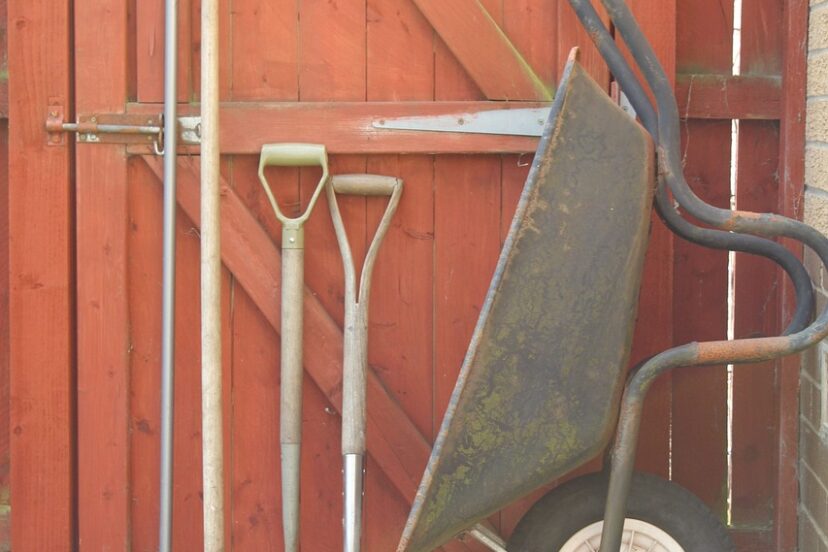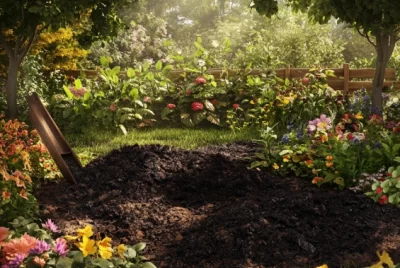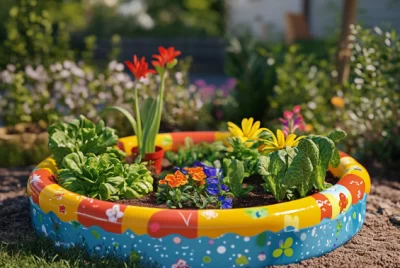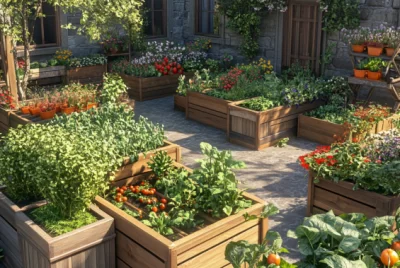Gardening Tools Names: Essential Equipment for the Gardening Enthusiast
Gardening Tools Names: Introduction
I understand the importance of having the right tools for the job. Whether you’re a beginner or an experienced green thumb, having the proper gardening tools can make a world of difference in your gardening experience. In this article, I will introduce you to a variety of gardening tools’ names, and their specific uses. By the end, you’ll have a comprehensive understanding of the essential gardening tools needed to create and maintain a beautiful garden.
Gardening Tools Names: Essential Gardening Tools
Spade
A spade is a versatile tool that every gardener should have. It is used for tasks such as digging, edging, and planting. With a flat blade and a long handle, a spade allows you to cut through soil with ease. Whether you’re preparing a new bed or transplanting a shrub, a spade is an invaluable tool in your arsenal.
Pruning Shears
Pruning shears, also known as secateurs, are essential for maintaining healthy plants. These handheld cutting tools are designed to trim branches and remove dead or diseased parts of plants. Pruning shears come in different sizes and types, including bypass and anvil pruners. By using the right pruning shears, you can promote proper growth and shape your plants to your desired form.
Garden Hoe
A garden hoe is a must-have tool for cultivating soil and removing weeds. With a long handle and a flat, rectangular blade, a garden hoe allows you to break up the soil, create furrows for planting, and remove unwanted vegetation. It’s an efficient tool for loosening compacted soil and preparing the ground for planting.
Garden Fork
A garden fork is an excellent tool for aerating and loosening soil. It consists of several sturdy tines attached to a handle. By using a garden fork, you can break up clumps of soil, improve drainage, and create a healthier environment for your plants’ roots. Additionally, a garden fork can be useful for lifting and turning compost piles.
Hand Trowel
A hand trowel is a small, handheld tool with a pointed blade and a handle. It is perfect for tasks that require precision, such as transplanting seedlings or planting small bulbs. A hand trowel allows you to dig small holes, remove weeds, and loosen soil in tight spaces. It’s a versatile tool that every gardener should keep within reach.
Gardening Tools Names: Tools for Soil Preparation
Garden Rake
A garden rake is an essential tool for leveling the soil and removing debris. It typically consists of a long handle attached to a fan-shaped head with tines. By using a garden rake, you can smooth out the soil surface, break up clumps, and remove rocks, leaves, and other unwanted materials. It’s an essential tool for preparing the soil before planting.
Soil pH Tester
Knowing the pH level of your soil is crucial for successful gardening. A soil pH tester helps you determine whether your soil is acidic, neutral, or alkaline. This information is essential because different plants thrive in different pH ranges. By testing your soil’s pH, you can make the necessary amendments to create an optimal growing environment for your plants.
Soil Moisture Meter
Maintaining proper soil moisture is vital for plant health. A soil moisture meter allows you to measure the moisture content in the soil accurately. It helps you determine when to water your plants, preventing overwatering or underwatering. By using a soil moisture meter, you can ensure that your plants receive the right amount of water, promoting healthy growth.
Gardening Tools Names: Tools for Planting and Transplanting
Bulb Planter
A bulb planter is a specialized tool designed for planting bulbs efficiently. It features a long, cylindrical shape with a hollow tube at the bottom and a handle at the top. By using a bulb planter, you can dig precise holes at the right depth and spacing for your bulbs. It saves time and effort compared to traditional digging methods.
Seedling Tray
Seedling trays, also known as seed trays or nursery trays, are used for starting seeds indoors. These trays have multiple compartments or cells where you can sow individual seeds. Seedling trays help create a controlled environment for seed germination and early plant growth. They are convenient for maintaining organized and healthy seedlings before transplanting them into the garden.
Dibber
A dibber is a simple yet useful tool for making holes in the soil for planting seeds or small seedlings. It typically consists of a wooden or metal shaft with a pointed end. By using a dibber, you can create holes of consistent depth, ensuring proper seed placement and root growth. It’s a handy tool, especially for planting in rows or tight spaces.
Gardening Tools Names: Tools for Watering
Garden Hose
A garden hose is an essential tool for watering your plants. It allows you to deliver water directly to your garden beds, containers, or lawns. Look for a hose that is durable, kink-resistant, and comes with a suitable nozzle for adjustable water flow. A garden hose with a length that reaches all areas of your garden makes watering tasks much more convenient.
Watering Can
A watering can is a versatile tool for precise and gentle watering. It is ideal for smaller plants, seedlings, or plants in containers. Look for a watering can with a long spout and a comfortable handle. The long spout helps you reach deep into plants without disturbing the surrounding soil, while the handle allows for easy maneuvering and controlled pouring.
Sprinkler
A sprinkler system can be a lifesaver for large gardens or lawns. It helps distribute water evenly and efficiently over a wide area. Look for a sprinkler with adjustable spray patterns and coverage options to suit your garden’s size and shape. A sprinkler system saves time and ensures thorough watering, even when you’re away or unable to tend to the garden manually.
Gardening Tools Names: Tools for Pruning and Trimming
Hedge Shears
Hedge shears are designed specifically for shaping and maintaining hedges or shrubs. They have long, straight blades with serrated edges that can cut through thicker branches. Hedge shears allow you to create clean, precise cuts, promoting dense and well-manicured hedges. Choose hedge shears that are comfortable to handle and have adjustable tension for different cutting tasks.
Loppers
Loppers are heavy-duty pruning tools used for cutting thicker branches and stems. They have long handles and sharp blades, which provide leverage and power for cutting through tough woody growth. Loppers are ideal for pruning trees, shrubs, and larger plants that require more substantial cutting capacity than pruning shears. Look for loppers with ergonomic handles and replaceable blades for long-lasting use.
Pruning Saw
A pruning saw is a versatile tool for tackling larger pruning jobs. It features a sharp-toothed blade and a sturdy handle. Pruning saws are excellent for cutting through thick branches and limbs that are too large for loppers or pruning shears. Choose a pruning saw with a comfortable grip and a blade length suitable for the size of branches you typically encounter in your garden.
Gardening Tools Names: Tools for Weeding
Hand Weeder
A hand weeder, also known as a dandelion digger or weed puller, is a handy tool for removing weeds at their roots. It has a long handle and a V-shaped or forked blade. By using a hand weeder, you can dig into the soil and extract weeds with minimal disturbance to surrounding plants. It’s an efficient way to keep your garden free from unwanted vegetation.
Weed Puller
A weed puller, also called a weed extractor or weed remover, is a tool designed specifically for removing weeds from the ground. It typically features a long handle with a mechanism that grabs the weed’s roots when the tool is pressed into the soil. By using a weed puller, you can remove weeds without having to bend down or use excessive force, saving both time and effort.
Gardening Tools Names: Tools for Pest Control
Insecticide Sprayer
An insecticide sprayer is a tool that allows you to apply insecticides, fungicides, or other liquid treatments to your plants. It usually consists of a container for holding the solution and a nozzle for spraying. When using an insecticide sprayer, be sure to follow the instructions provided and consider environmentally friendly alternatives whenever possible. Proper pest control helps protect your plants from harmful insects and diseases.
Slug and Snail Trap
Slugs and snails can be detrimental to your garden, especially to young and tender plants. Using slug and snail traps can help reduce their population and protect your plants. These traps can be purchased or made using materials such as shallow containers filled with beer or yeast solution. The slugs and snails are attracted to the liquid and drown in the trap. Regularly empty and refill the traps to maintain their effectiveness.
Garden Netting
Garden netting is a preventive measure to protect your plants from birds, insects, or other animals. It acts as a physical barrier that prevents them from reaching your crops. Garden netting comes in different sizes and materials, such as mesh or nylon. Ensure that the netting you choose allows sufficient light and airflow while effectively deterring pests. Properly securing the netting helps ensure its effectiveness.
Gardening Tools Names: Storage and Organization
Garden Shed
A garden shed provides a dedicated space for storing your gardening tools and equipment. It helps keep your tools organized, protected from the elements, and easily accessible. When choosing a garden shed, consider its size, durability, and ventilation. A well-organized garden shed ensures that your tools are always ready for use and extends their lifespan.
Tool Rack
A tool rack is an efficient way to keep your frequently used tools within reach. It can be mounted on a wall or installed as a freestanding unit. A tool rack helps organize your tools, saving valuable time and preventing loss or damage. Choose a sturdy and well-designed tool rack that accommodates your specific gardening tools and keeps them well-organized.
Tool Bag
A tool bag is a portable solution for carrying essential gardening tools. It allows you to keep your tools together and easily transport them around your garden or between different gardening locations. Look for a tool bag with multiple compartments and sturdy construction to accommodate different-sized tools and provide durability.
Gardening Tools Names: Conclusion
Having the right gardening tools can make your gardening experience more enjoyable and successful. From essential tools like spades and pruning shears to specialized tools for specific tasks, each tool serves a purpose in creating and maintaining a beautiful garden. Remember to choose high-quality tools that suit your gardening needs and properly care for them to ensure their longevity. Happy gardening!
Gardening Tools Names: FAQs
1. What are the must-have gardening tools for beginners?
For beginners, some must-have gardening tools include a spade, pruning shears, garden rake, hand trowel, and watering can. These tools cover the basic needs of soil preparation, planting, pruning, and watering, allowing beginners to start their gardening journey with essential equipment.
2. How often should I clean and sharpen my gardening tools?
It’s a good practice to clean your gardening tools after each use to remove dirt, debris, and any plant residue. Regular cleaning helps prevent the spread of diseases between plants. As for sharpening, it depends on the frequency of use and the type of tool. Pruning shears and loppers should be sharpened annually or whenever they become dull, while shovels and spades may require sharpening less frequently.
3. Can I use household scissors instead of pruning shears?
While household scissors may be used for lighter tasks, it is recommended to use proper pruning shears for pruning and trimming plants. Pruning shears are specifically designed with sharp blades and a bypass or anvil mechanism to make clean cuts without damaging the plant. They provide better control and precision, making them more suitable for gardening purposes.
4. What are some eco-friendly alternatives to chemical insecticides?
There are several eco-friendly alternatives to chemical insecticides. These include companion planting, which involves growing certain plants that repel pests or attract beneficial insects. Additionally, using organic pest control methods such as neem oil, insecticidal soaps, and homemade solutions like garlic or chili pepper sprays can help deter pests. Physical barriers like garden netting or floating row covers are also effective in protecting plants from pests.
5. How do I maintain my garden tools to prevent rust?
To prevent rust on your garden tools, it’s essential to keep them clean and dry. After each use, wipe down the tools with a dry cloth or brush to remove any moisture or soil. If there are signs of rust, use a wire brush or sandpaper to gently remove the rust, and then apply a light coat of oil to protect the metal. Store your tools in a dry place, preferably hanging them or keeping them in a well-ventilated shed to avoid moisture buildup.
Remember, maintaining sharp and rust-free tools not only extends their lifespan but also ensures optimal performance in the garden.




